Connect4Climate believes in the power of Film, Sports, Fashion and Music to connect people and catalyze a climate movement with Youth at the center.
Connect4Climate believes in the power of Film, Sports, Fashion and Music to connect people and catalyze a climate movement with Youth at the center.
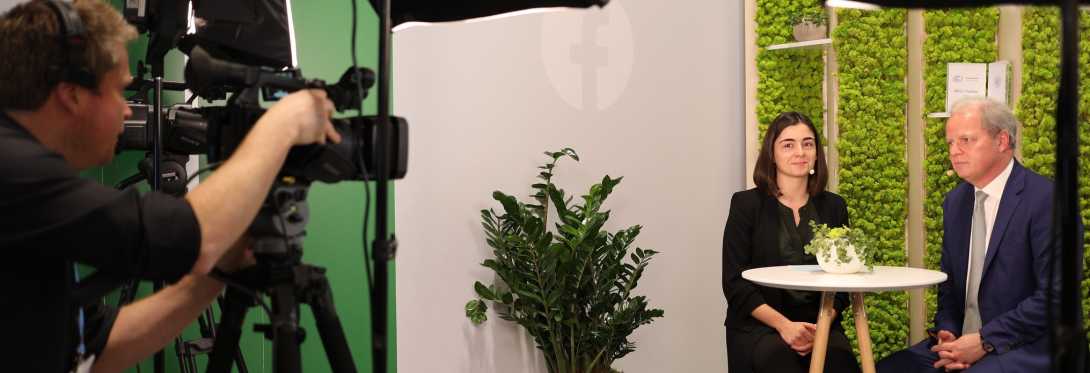
Connect4Climate was honored to oversee a #YouthTakeover at COP25 featuring the four rising climate communicators who won this year's Global Youth Video Competition! All four of these winners—Callie Broaddus, Raquel Gaião Silva, Rafael Forsetto and Kiane Assis—share memories from the conference, and what the experience meant to them, in their own words in the reflections below:

CALLIE BROADDUS
It took ten minutes to walk from one end of Madrid’s IFEMA conference center to the other—that is, if we didn’t stop to snag the handout of tree-planting chocolate, sing a carol with “Sustaina-Claus,” read the signs at the daily youth protests, or listen to the 20 indigenous people demonstrating in the entrance hall. It was a massive event, and for first-time COP-goers, a tad overwhelming.
This year’s Global Youth Video Competition had four winners, so Connect4Climate’s #YouthTakeover was a group effort. We connected each morning over WhatsApp to determine who would cover and attend which events (the size of the conference center often made it inconvenient to meet in person). The joint effort meant that we could each cover events specifically related to our own fields of work. For me, this meant attending events on nature-based solutions and biodiversity; for Rafael and Kiane, events on social justice and migration; and for Raquel, all things ocean.
The panels I attended repeatedly stressed several key points: We need to protect our tropical and temperate forests; prevent exploitation of our peatlands, wetlands, and marine kelp forests; and plant trees in bulk if we’re to make sizable strides toward climate commitments. Given that we are in the midst of a biodiversity crisis—one often called the sixth mass extinction—I expected discussions on the balance between climate and ecosystems to be more prominent on panels, and less audience-generated.
One common thread that wove each panel together was a vocabulary of UN-centric terms and acronyms: CBD, UNFCCC, UNCCD, NDCs, SDGs and more.The ability to decipher this mass of letters proved essential to comprehending every panel—and even most coffee-line conversations.
Having the opportunity to attend and document COP from a “youth climate reporter” point of view was incredibly valuable for my personal understanding of conservation on an international scale. Having an energized and diverse team enabled each of us to both cover the event comprehensively and leave with strong personal takeaways. For my part, I’ll be making an acronym dictionary and lining up my biodiversity-related audience questions before attempting to navigate COP26.

RAQUEL GAIÃO SILVA
I am back home and I still can’t believe what happened during my time at COP25. Two weeks listening to alarming information and talking about nature-based solutions. Two weeks witnessing testimonials of populations already being impacted by climate change. Two weeks listening to scientific reports that demand action starting yesterday. Two weeks nourishing the desire for greater ambition. Two weeks that felt like months.
Over those two weeks, I experienced myriad situations I could never have imagined in my wildest dreams, from meeting Sylvia Earle in the corridor and telling her my thoughts on ocean-based climate solutions to interviewing and discussing climate finance with the Managing Director of the World Bank to speaking with the Administrator of the UNDP, who so avidly listened to our stories with full attention.
It was an intense and inspiring ride. And the most amazing part is that even if I didn’t meet such interesting people, the simple fact of having UNFCCC and the Connect4Climate team there to answer the million questions I had with kind smiles was all I could ask for.
These two weeks will stay on my mind for a long time to come, and will definitely influence my next projects, my next actions, and my next steps.
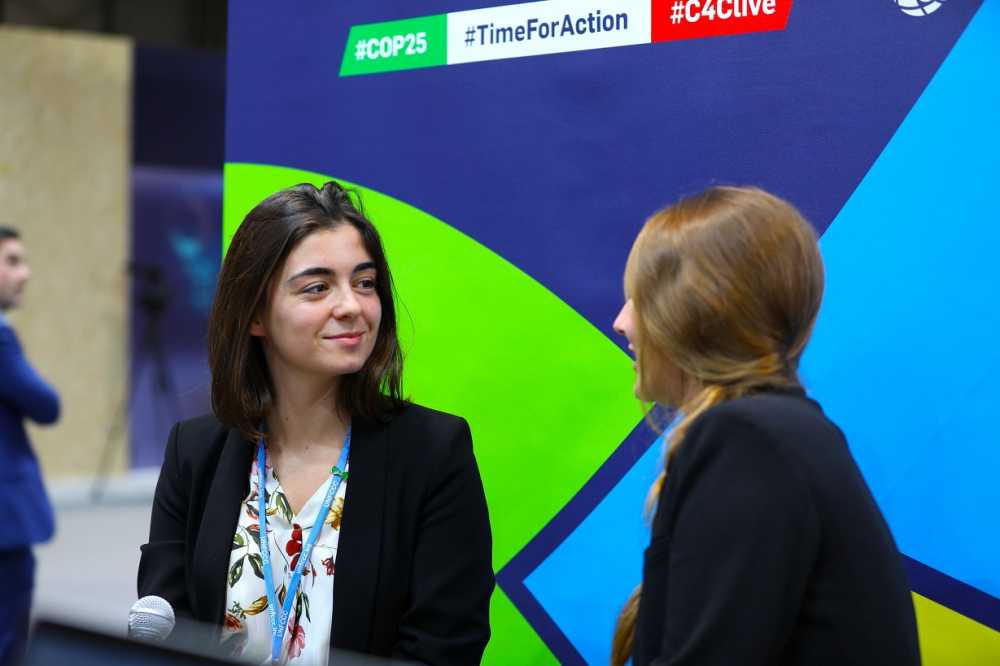
RAFAEL FORSETTO
Before going to COP25, I had the impression that it would be a very technical conference, full of charts and data. These thoughts left me somewhat apprehensive, since I come from a communications background and didn’t know much about the scientific aspects of climate change. That all changed once I arrived in Madrid. As soon as I got to IFEMA, the sheer size of the conference amazed me. It occurred to me that there was much more to climate talks than just numbers and charts; every day there were dozens of events touching on all kinds of topics.
COP25 brought to my attention many aspects of climate change that I hadn’t previously considered. What most interested me were its impacts on society and individuals. I sought out events focused on how climate change will influence migration in the coming years, with people fleeing coastal regions due to rising sea levels. These events did a great job not only raising awareness about these critical issues, but also starting discussions and generating solutions to them. The best part of COP for me was seeing so many like-minded individuals banding together and working towards the same purpose: a better future beyond the climate crisis.
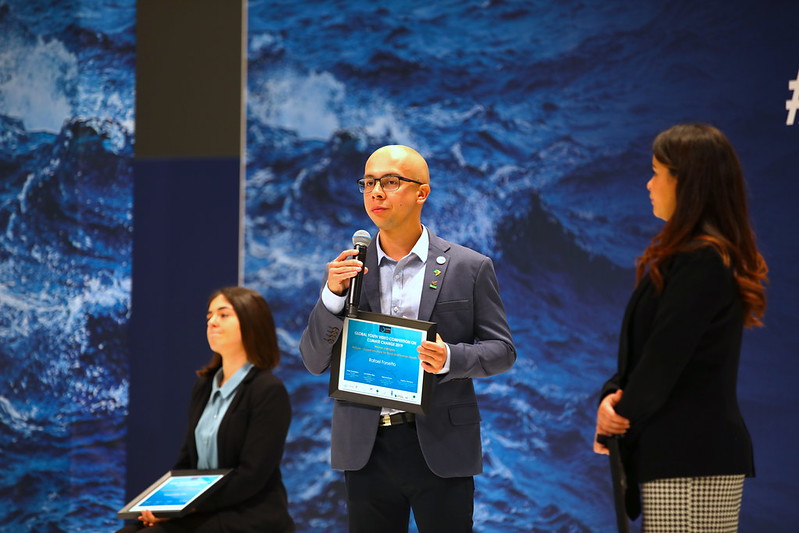
KIANE ASSIS
COP25 was a turning point in my life. I come from a small town where youth, especially girls and women, do not possess an active voice in society. I admit that I got nervous once I saw the magnitude of the conference and thought about all the important people in attendance.
However, in my first few hours there, I had the chance to hear Niclas Svenningsen from Global Climate Action speak. It was so inspiring to hear someone like him tell the youth that we need to act now.
Immediately afterwards, youth from all over the world spoke with conviction about their values and the transformative actions they were undertaking. It made me feel like I had a place in this movement. It became clear to me that we, the youth, have to speak and act with courage and determination if we want to change the world!
The recognition we received for our work really demonstrated to me how important communication is when it comes to inspiring others to take meaningful climate action. It’s how we can make ourselves heard within society, and the time that my colleague Rafael and I spent at COP25 has inspired us for our next environmental project.
Thank you UNFCCC, UN Biodiversity, UNCDB and Connect4Climate for this opportunity and for inspiring me to continue fighting for a better, cleaner future. We will continue making our voices heard because #WeAreAction!
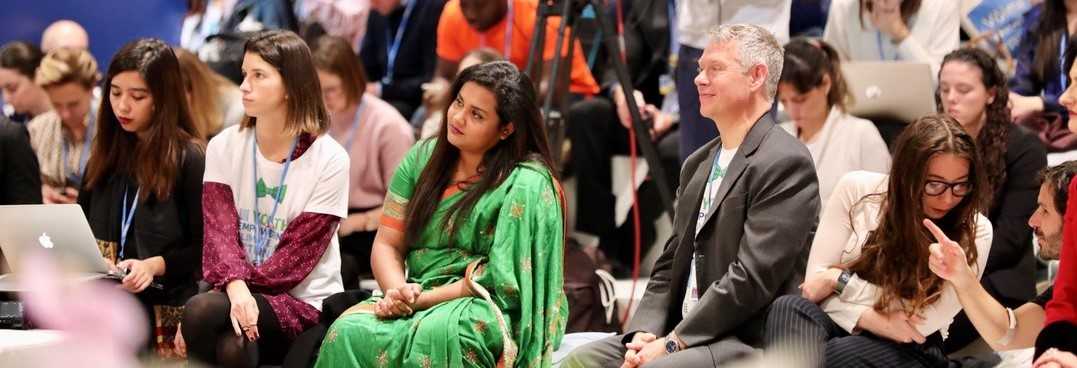
"My home and my people drive me to take action... Knowing that in 20 years there might not be islands in the Pacific and knowing that we have futures to secure and a responsibility to those who come after us."
--Genevieve Jiva, Coordinator at Pacific Islands Climate Action Network, Fiji
"I'm taking action by occupying space at COP25, raising awareness and by letting folks know that a global temperature increase of 2 degrees is more of a reality of 8-10 degrees for people in my community and the Canadian Arctic."
--Robert Comeau, Associate at Youth Climate Lab, Canadian Arctic
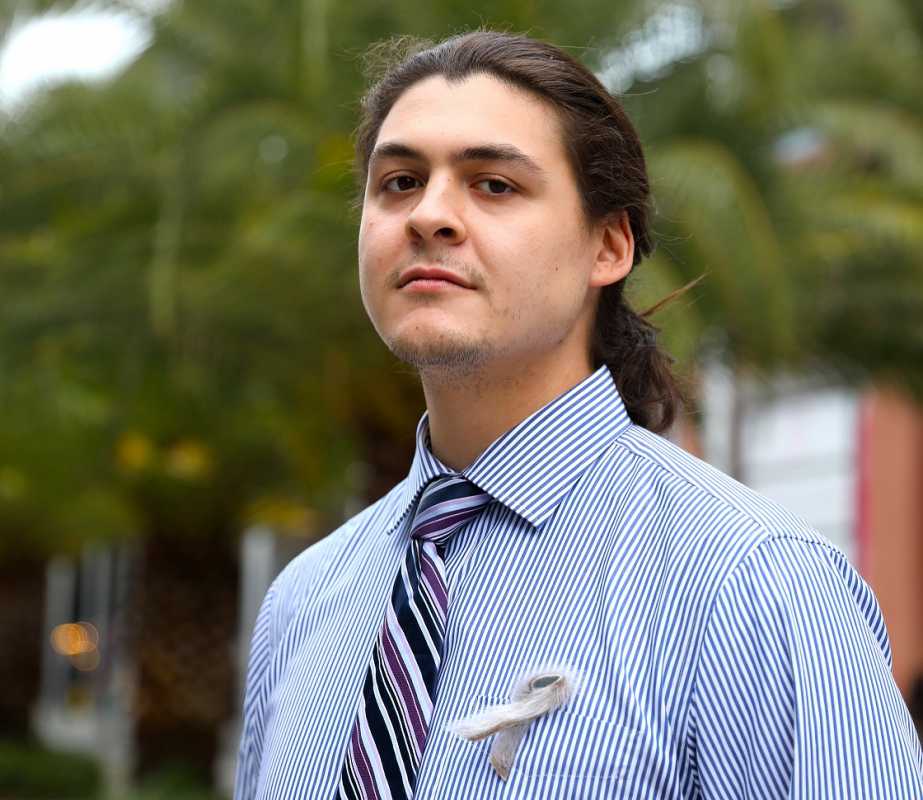
"If you want to see a change in the world you have to be the change you want to see... I'm taking action by making climate change my career, I work with the Lebanese ministry of environment focusing on climate planning, climate mainstreaming and on the implementation of the NDC targets."
--Mary Awad, Climate Transparency Expert, Lebanon
“I am here at CO25 to demand global climate action and also to push for more youth engagement in the climate decision-making processes. I'm taking action because I want a sustainable future that works for all of us… a future where we stop fighting nature and stop threatening our life support system."
--Elizabeth Wanjiru Wathuti, Environment and Climate Activist, Kenya

“This world is our place and it needs us to act now - it doesn't need words, it needs concrete actions. Leave behind the idea that your action will not change anything: no matter your age, no matter your place, you are part of the change. It's up to you which side of the change you're on."
--Benjamin Carvajal, COY15 coordinator, founder of Limpiando Inconsciencias and Uno Punto Cinco, Chile
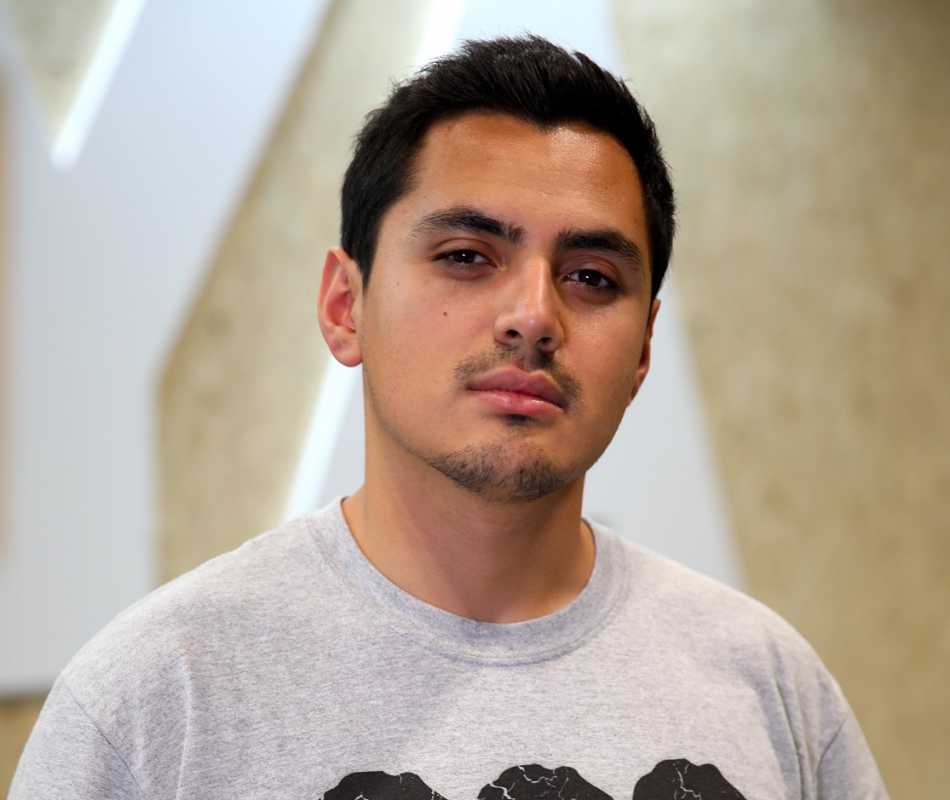
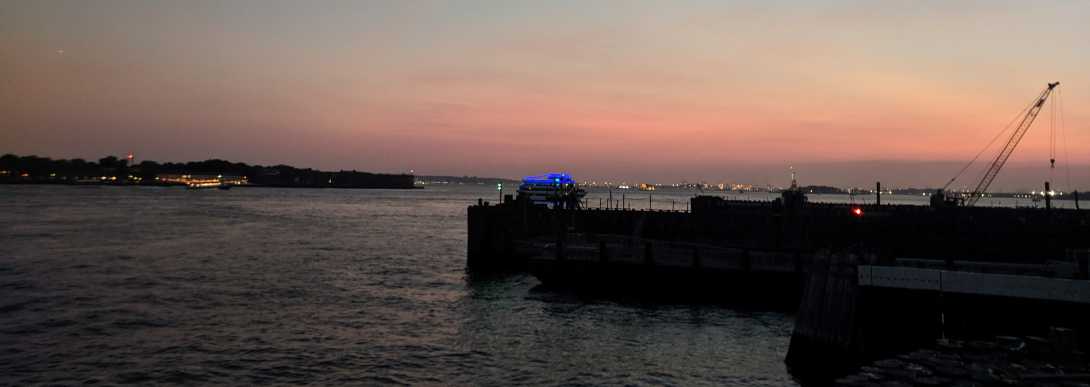
It was a busy morning with Connect4Climate's #YouthTakeover team at the UN Youth Climate Action Summit. There was a collective interest shared among event goers; it truly felt like momentum towards a sustainable future was picking up in a major way. One aspect of the event that sparked conversation was the Pollution Pods installation created by artist Micheal Pinky. The interactive experience took less than ten minutes to walk through and used physical and chemical effects to give those who doubt the legitimacy of the warming effects of greenhouse gas emissions a new perspective. Pods simulated air quality from London, New Delhi, Beijing, São Paulo, and Oslo, immersing participants in these environments.
The replications in each pod tailored the various concentrations of pollutants such as carbon dioxide, sulfur dioxide, ozone, nitrous oxide, and particulate matter to make it feel like you were on the street in the center of each city. When users would leave the simulation, they would appreciate the cool breeze coming off the river just that much more. As things were beginning to wrap up for the day, an environmentalist colleague and I were afforded the opportunity to make our way to the High-Level Commission on Carbon Pricing event being held nearby.
Carbon pricing acknowledges the steep human and environmental cost of industrial pollution and shifts that cost, usually shouldered by tax-paying citizens, to polluters themselves. Under this system, if a company elects to include fossil fuels in its business model, it must pay upfront to account for the damage the resulting greenhouse gases will cause down the line. Pricing carbon emissions at the source using a set price per metric ton can make market shifts more predictable and send a clear and consistent message to investors and business leaders.

Michael Pinky's Pollution Pods installation. (Nicole Provost, #YouthTakeover Team)
Carbon pricing never works as a stand-alone measure, but rather as a piece in the much larger puzzle we are now calling a “greener future.” I was surprised to learn that 40 governments worldwide have adopted a price on carbon and that within the United States there are ten states that have already committed or made a future commitment to pricing carbon. In some scenarios a cap and trade mechanism was a viable option both politically and economically. In other scenarios, like in British Columbia, a tax system was put in place. Regardless, the result was a rapid decline of coal usage solely due to the fact that running costs for these plants were no longer competitive with the price of renewables (natural gas, for instance, is almost 20 dollars cheaper per megawatt hour than coal).
These carbon pricing systems are being used globally to cut economic losses while making environmental gains. Their success in incentivizing power plants to move away from the high emissions of fossil fuels will one day serve as a template for cutting emissions in other major industries, such as maritime shipping, the aviation sector, and concrete and steel production. One concern of some industrial players is that these restrictions on corporations’ productivity could harm their competitiveness by pushing investments into other countries or states where there is no price on carbon. Industry leaders came together at the High-Level Commission event to dispel these fears and make clear that pricing carbon will not hinder economic growth.
The new report launched by the High-Level Commission on Carbon Pricing and Competitiveness during the UN Climate Action Summit in New York concludes that carbon pricing is not going to decrease competitiveness or drive business out. By convening multiple panels, all filled with intelligent industry, academic, and policy experts, the event painted a clear picture of an economy that can flourish against a carbon-priced backdrop. The panelists suggested that loss of market share and profits will actually primarily affect those in the economy who wish to continue to fight against low-emission alternatives.

Carbon pricing ensures the cost of pollution is borne by polluters. (JuergenPM, Pixabay)
The panelists agreed that those states that are hesitant about putting a strong price on carbon will suffer in the long run. The concern internationally for competitiveness is minimal since eventually carbon prices will balance out worldwide, making the benefit of moving production insignificant. Another point that panelists stressed was that, regardless of whether governments have set national carbon prices yet, businesses need to set a price on carbon internally. This will help companies smoothly transition into a carbon-priced scenario and future-proof their business.
The consensus was that unlocking the potential of the private sector will be a critical factor in reducing carbon emissions. I found it particularly interesting when data was presented to suggest that pricing carbon has actually driven innovation, investment, and growth. Consumers are becoming proactive in their environmental awareness and beginning to put their money where their mouth is when determining which product or service to purchase. The data shows that consumers will stand by companies and corporations that do right by the environment before worrying about their bottom line. This means that consumers and business leaders alike are poised to enter a cleaner tomorrow.
We consumers are becoming increasingly aware of how the market will react to our wants and needs. We want companies to act in a sustainable manner. As a learner, I was fascinated by the economic principles that were explained that day; I am sure that I and everyone else in that room learned something new. More importantly, experts in the room clearly got their point across: there is no future that does not include a price on carbon.
Banner image courtesy of Jessica Schlimmer, #YouthTakeover Team.

In the biggest climate protest in history, an estimated 4 million people in over 150 countries and all 50 US states marched against climate change on September 20.
The September 2019 climate strikes saw students worldwide walk out of school to demand that governments take immediate action to solve climate change.
The protests were inspired by 16-year-old Swedish activist Greta Thunberg, who’s currently at the forefront of the global youth climate movement.
“I think climate activists like Greta Thunberg are just so incredible and so inspiring because [of] what she's doing and the incredibly radical way that she's doing it,” sophomore Camila Jongsma said.
While students around the world are marching for government action, others at PVHS are making an effort to reduce their environmental impact.
“I have been trying to reduce my carbon footprint by buying recyclable products only, by eating organic, and by eating less meat,” said sophomore Sophia Cuyler.
Additionally, Jongsma is vegetarian and bikes to school.

Greta Thunbeg at the UN Climate Action Summit.
In August 2018, Thunberg began skipping school on Fridays, holding a sign in front of the Swedish parliament that read “school strike for the climate.”
Her activism inspired major youth climate strikes worldwide in March and May of this year. Last month’s strikes took place from September 20-27 to coincide with UN climate conferences.
Thunberg addressed world leaders at the UN Climate Action Summit: “The eyes of all future generations are upon you. And if you choose to fail us I say we will never forgive you.”
LA native Slater Jewell-Kemker has special insight into the growing influence of the youth climate movement. At 15, she began filming other activists, following them around the world for more than 10 years. This culminated in her 2018 film, Youth Unstoppable.
“Our generation has had to grow up faster because our leaders have either refused to lead, or refused to acknowledge there is a problem,” Jewell-Kemker said. “So we have to step up and change the world ourselves.”
As someone who paved the way for Thunberg, Jewell-Kemker understands the immense pressure facing this new generation of youth climate activists.
“It's exhilarating but also a lot to bear, ” Jewell-Kemker said. “That's why this movement of young people that is exploding across the planet is so inspiring because we're not alone anymore.”
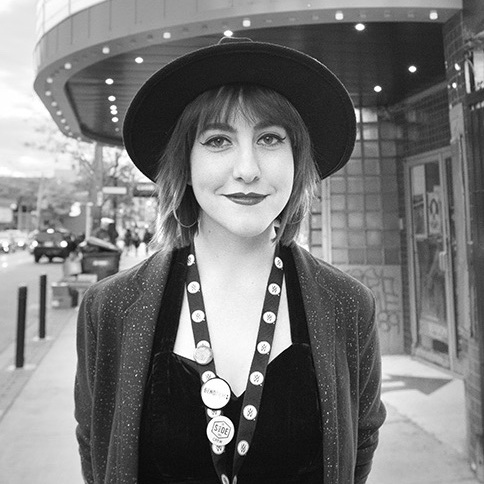
Slater Jewell-Kemker, director of Youth Unstoppable.
And the stakes couldn’t be higher.
“If human beings … do nothing to drastically cut our emissions and change the way we live, climate change will move beyond our control,” Jewell-Kemker said. “We are addressing the very mortality of our species.”
While individual efforts are crucial, Jewell-Kemker believes that only governments have the power to pass laws that will move us swiftly towards a carbon-neutral society. This is exactly what Thunberg and the youth climate movement are fighting for.
“As youth it's easy to believe we don't have this big voice in the Earth, but really it's completely opposite,” Jongsma said. “The climate strike marches … are demanding change, and the people in power know that we are not stopping until we get it.”
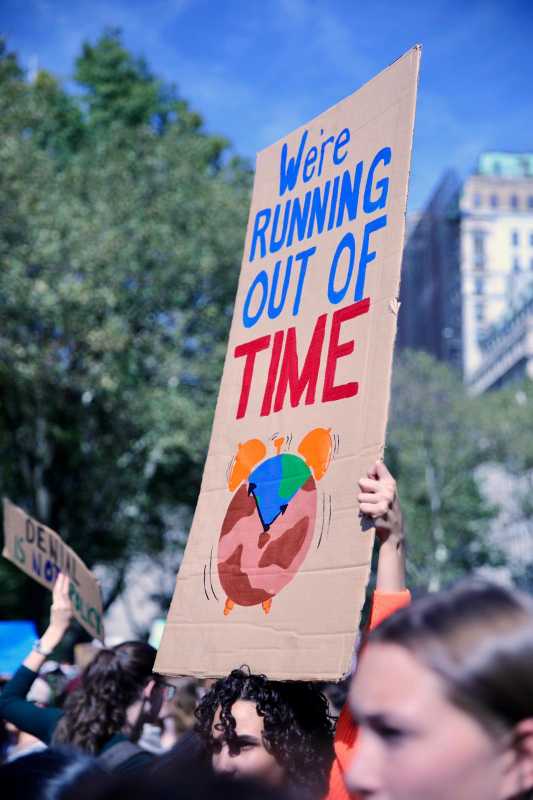
Students at a #SchoolStrike4Climate event in New York City.
This article originally appeared in The Point, Palos Verdes High School's campus newspaper. Color images courtesy of Kaia Rose and the Connect4Climate team. Black-and-white image courtesy of Slater Jewell-Kemker.
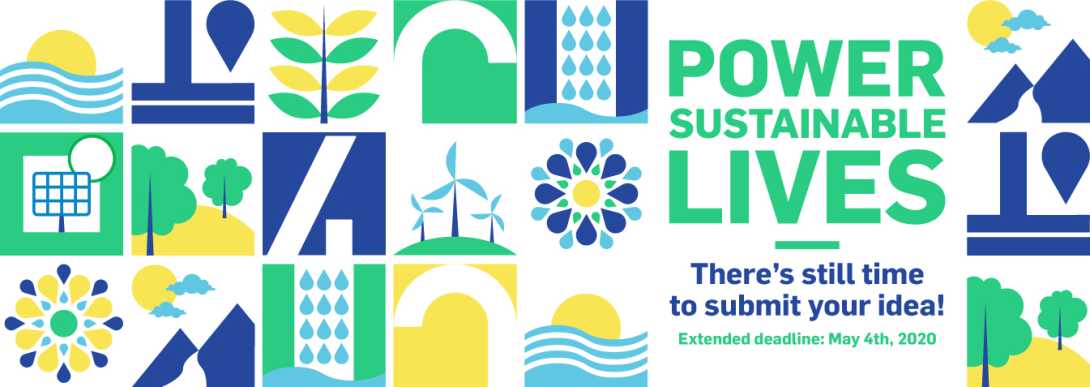
Motivating large groups of people to take real action is both one of the most important and one of the most daunting challenges facing the climate advocacy community today. No individual can solve the climate crisis; if we’re to succeed in turning the tide, whole communities around the world will have to embrace messages of sustainability and concretely change their behavior. This is where the power of advertising comes in. In order to bring about widespread behavior change, climate allies will need to be persuasive, concise and compelling—the specialty of trained marketers.
Each year, the British nonprofit Design & Art Direction (D&AD) recognizes outstanding achievement in advertising through competitions. In addition to supporting already-established forces in the industry, D&AD is committed to elevating young voices with its student-focused New Blood Awards. C4C is excited to announce that we are partnering with D&AD for the 2020 edition of the New Blood competition, in which we are inviting students from all around the world to send in their ideas for innovative sustainability-themed advertising campaigns with the end goal of effecting sustained, pervasive climate-positive behavior change.
➡️ DOWNLOAD Connect4Climate's Call-to-Action Brief: http://bit.ly/348bk2r
If you are a student over 18 years of age with no history of formal employment in the creative arts who is passionate about spreading sustainable practices for the welfare of our planet—or if you know such a person!—we encourage you to download our call-to-action brief on the D&AD website. This document lays out exactly what we’re looking for from applicants.
If you’re unsure of your eligibility, D&AD has prepared a quick quiz you can take to determine for sure whether you’re clear to participate.
We at C4C are very much looking forward to seeing what bold new approaches to promoting broad climate action will arise from young minds across the globe. Best of luck!
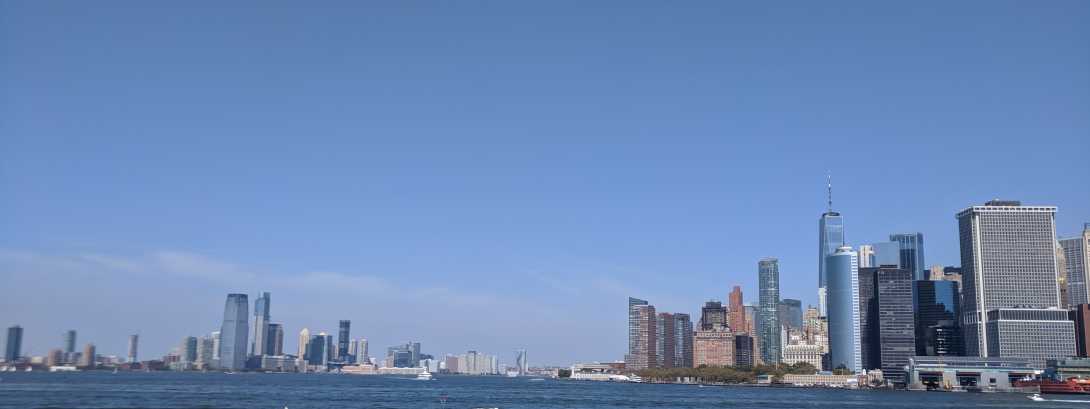
I attended the UN Youth Climate Change Summit with zero experience in climate science, policy, or activism. Just a film student with an extensive background in film literature and some in communication studies, I nervously entered the UN Trusteeship Council with my DSLR and scattered thoughts about current events. While I did not know everything about the ozone or greenhouse gasses that a scientist or environmentalist would, I’ve always been conscious about climate change. Noticing the fluctuation in weather patterns and reading up on the melting of polar ice caps made me fear what the future might bring. Prior to this summit, I thought climate change was a problem too big to solve. However, this experience taught me otherwise. In fact, it inspired me.
For an entire day, I was surrounded by people of all different ages, nationalities, and backgrounds who had come together to tackle one of the biggest issues in our society. Once the first panel started, I was shocked to see how many students, some even younger than me, were engaging in conversations about an issue that many adults in America believe to be a hoax. With students like Greta Thunberg and Bruno Rodriguez discussing the state of our environment with such passion and expertise, I will dispute anyone who tells me today’s youth are “lazy” or “don’t know what they’re talking about.”

Panel after panel, I was introduced to eye-opening information on how individuals, communities, companies, and others can mitigate the effects of climate change through sustainability-minded projects, products, and practices. These events not only introduced me to a variety of solutions but also taught me how climate change is intersectional—how its impacts permeate through other issues. Finding solutions to climate change is about more than just improving the environment; we need to consider how it affects the economy, how it affects race and social class, how it impacts minority groups and even gender politics.
A favorite panel of mine was in the afternoon, titled, “A Race We Must Win: Sprinting Together to 2020.” During this session, a panel of Olympians and other elite athletes banded together to discuss how the effects of climate change directly impact the future of sports, thus connecting the issue to everyday life.
The panel opened with marathon champion Joan Benoit Samuelson stating that climate change affects our workouts and overall health. Across frequent visits to the Gulf of Maine, she had noted rising waters, changes in species, warmer temperatures, and even an increase in the intensity of the sun’s UV rays. While exercising outdoors has its health benefits, Samuelson concluded that “if we want to have a healthy body, we need to have a healthy environment.” The panel continued with further anecdotes from American snowboarder Chloe Kim, Tongan taekwondo practitioner Pita Taufatofua, American sabre fencer Ibtihaj Muhammad, American professional skateboarder Eric Koston, and British competitive sailor Hannah Mills. While all the athletes came from different backgrounds and experiences, they unanimously agreed their love for sports motivated them to advocate for the environment. Ibtihaj expressed the connection best by simply saying, “I care about climate change. I know it affects each of us in detrimental ways... and the bottom line is, if there is no planet, there is no sport.”
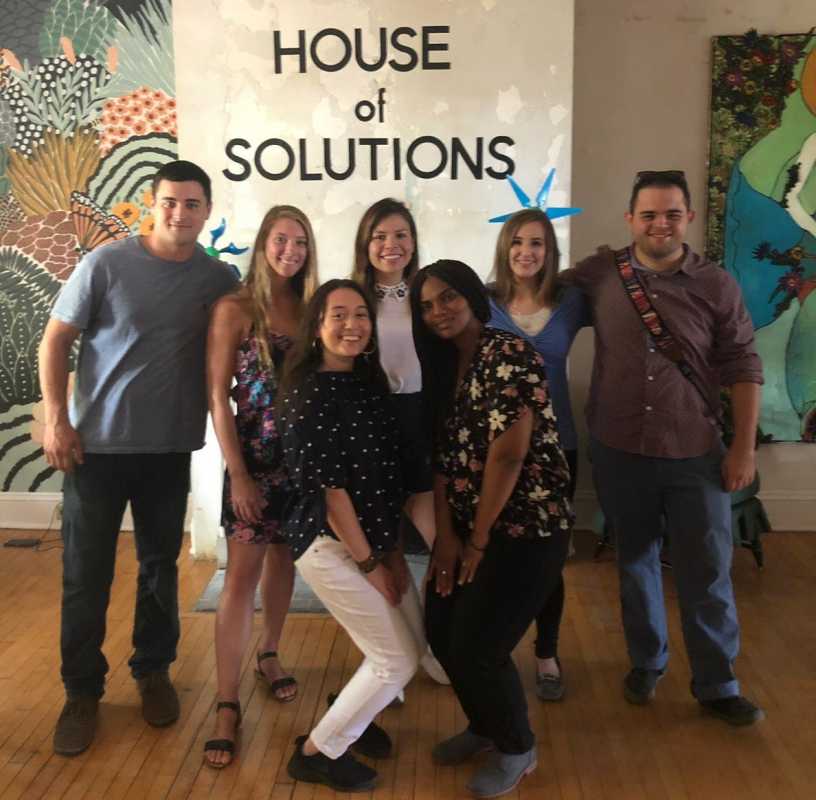
I appreciated this panel as the speakers spoke from the perspectives of conscientious everyday people. These athletes might not have an extensive background in the sciences, but their careers (like all careers, honestly) rely on the environment. The personal stories they shared helped me realize that caring for the planet is not a choice. Climate change is an issue that affects us all, no matter what we do or where we live. With this in mind, it is mandatory that we step up as a society and take action from the ground up, starting at the individual level and working our way up to institutions.
Besides the thought-provoking speeches and presentations on different aspects of climate change, what truly took me by surprise was the abundance of solutions available to handle this issue. Most of what I hear on climate change is news about its never-ending problems shared via social media. Every time I scroll through Instagram or watch story posts from friends, there are posts designed to raise awareness about various social issues—but that awareness is usually negative. We use social media as a tool to get a problem across to other communities, but how often do we let people know what they can do to fix it? This is what the UN Foundation’s Communications Officer, Chandler Green, discussed in her two minutes in front of the Trusteeship Council. She expressed that, in terms of statistics, we only see solutions in media 13% of the time. This number shocked me, but it also made a lot of sense.
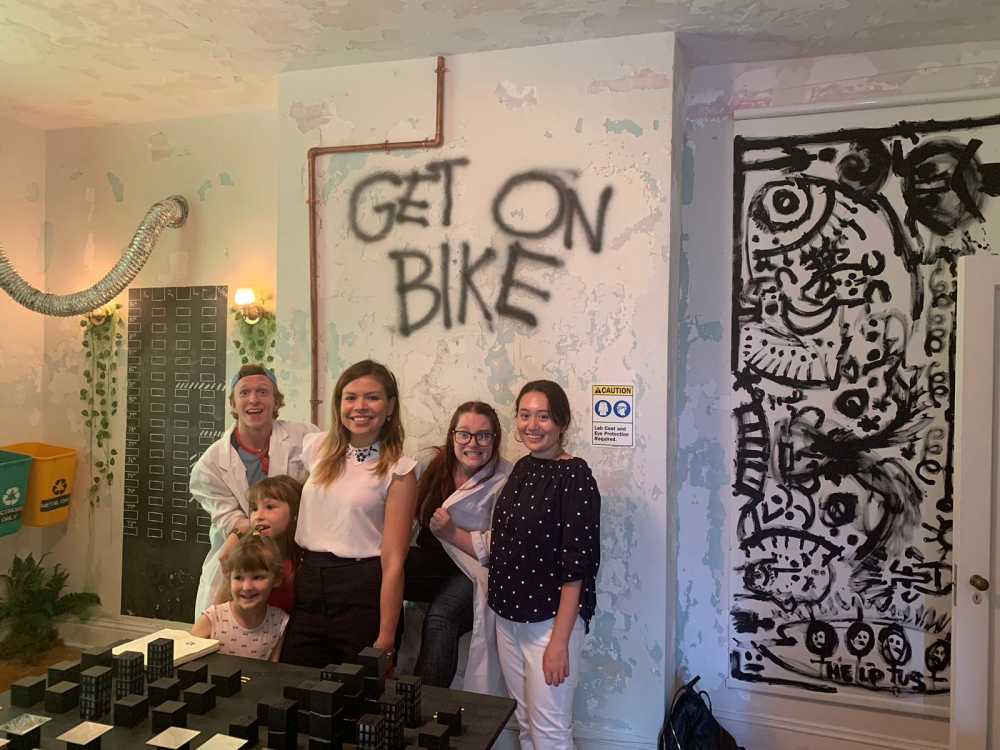
Given that statistic, I understood why climate change seemed so intimidating and hopeless at first. Furthermore, I understood why many other people believe the world is going to fall apart due to the impacts of climate change—they simply aren’t aware of what can be done. And thus, in my role as a social media contributor for Connect4Climate’s #YouthTakeover, I realized that social media is more than a tool to get a point across. Why add yet another negative post about the problem to the Instagram feed when you could instead create a photoset illustrating how one can make their daily life more sustainable? As Chandler Green asserted, “nothing can be accomplished without passion.” Anyone can tackle climate change if they have the hope and commitment to act.
Fighting against climate change is only an impossible feat if you take it as such. While we cannot undo what has already been done, we can be proactive and move forward with bold new strategies. And with the help of social media, if we give people content and information, they can reciprocate with action. Imagine then the beneficial outcomes we can reap for our environment and our society in the years to come.
Banner image courtesy of Jessica Schlimmer. First photo in article courtesy of Maria-Isabelle Parada; remaining two by the Connect4Climate #YouthTakeover team.
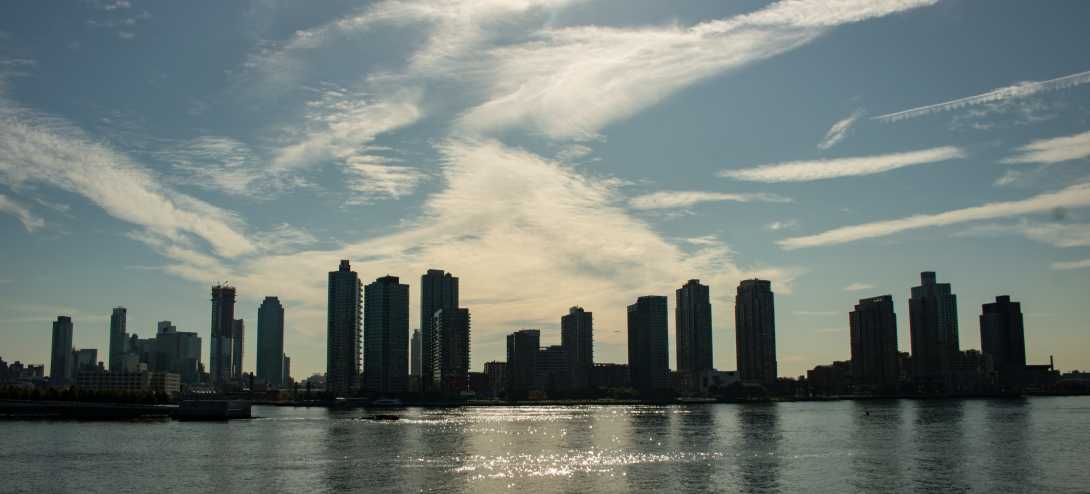
New York, NY - When I arrived at the United Nations, I felt at home; I entered with my Colombian passport and it was natural to be from somewhere other than the United States. My accent was well received and I learned that Spanish is one of the five official languages of the United Nations.
I was at the first-ever Youth Climate Summit as part of the Connect4Climate #YouthTakeover team. My background has nothing to do with the environment, climate, or global warming. I am not involved in any kind of activist program fighting climate change. And yet, I felt like I belonged.
The summit purposely focused on the actions everyone can take to fight climate change. I had always thought one needed to be an activist, politician, scientist or someone like that to fight against or talk about climate change. The summit taught me that everyone has a part to play.
Whether your passion is sports, fashion, culinary arts, technology or business, whether you study film or are a social media influencer, you can take action to fight climate change through your individual interests and unique career path.
My passion is sports, so I was thrilled to learn how the sports community can help combat climate change. Danni Washington, moderator of the SDG Media Zone and the first African-American woman to host an American Science TV Show, told me about the different ways fans, sporting events committees, and athletes can contribute to climate action.
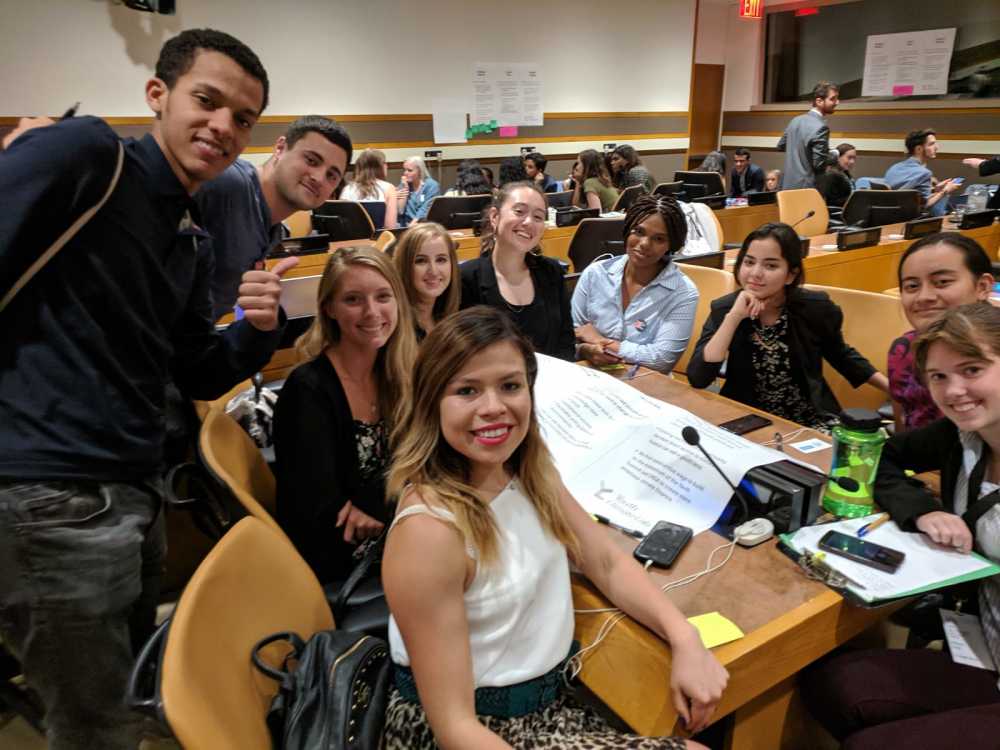
Athletes have a lot of influence among their fans. “There are so many fans around the world from so many sports. [Athletes] can use their platform to educate people and help them understand what climate change is really about,” Washington said. “They can give the general public the resources, the information, and the tools they need to make better decisions for our world.”
Hannah Mills, a two-time Olympic sailing champion, is using her platform to take climate action and influence other athletes, fans and sport-lovers to do the same. Mills shared at the summit her campaign “Big Plastic Pledge,” which calls on fans and athletes to get involved by making at least three pledges of a possible nine listed on the campaign website. She is on a mission to eliminate plastic from stadiums and sporting events.
I had already pledged to use my own water bottle and to say no to single-use plastic shopping bags. It’s better to make small and imperfect changes than to take no action at all.
I practice CrossFit and know that other athletes change their diets according to their individual goals, sometimes by adding more carbs or by drinking more water. If we athletes can change our exercise regimens and diets to perform and look better, we can make small and consistent shifts in our lifestyle to help our planet.
“Our planet is going through different changes because of our behavior and it’s time that we humans recognize our role in the planet and do something to fix it,” Washington told me.
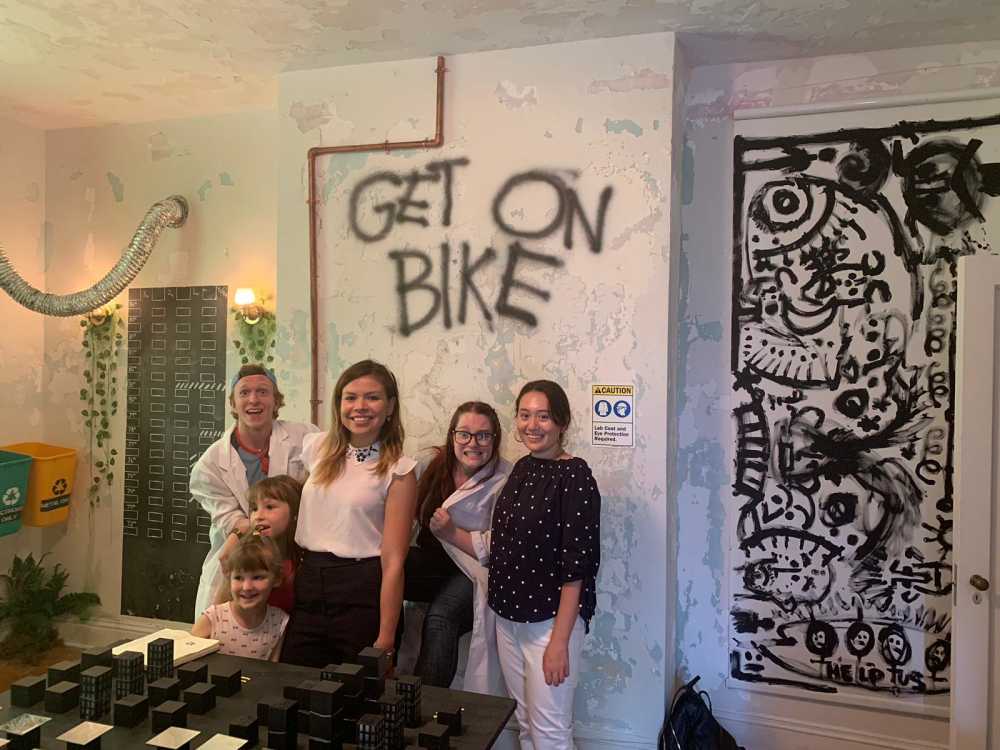
My role as a sportsperson and journalist is to hold those sports committees and athletes who have pledged to help the environment accountable to their commitments and to keep reporting on how the sports community can contribute to solving this issue that affects all of us.
During one panel at the SDG Media Zone, two models from my native Colombia, Toya Montoya and Laura Tobon, spoke about the actions they are taking within the fashion industry. Montoya said, “A year ago, I stopped working with companies who are not environmentally friendly.” Tobon admitted to being a shopaholic but said she has learned not to buy clothes unnecessarily.
Living in this social media era, I used to think I could never post a picture with the same outfit twice. This way of thinking led me to buy a new outfit every time I had an event. Montoya and Tobon expressed this concern themselves but explained that they now mix and match their outfits, buying fewer clothes and only buying from sustainable brands.
At the end of the summit, representatives from the food industry showed us healthy recipes. By buying from local markets and by eating less meat we can reduce our carbon footprint.
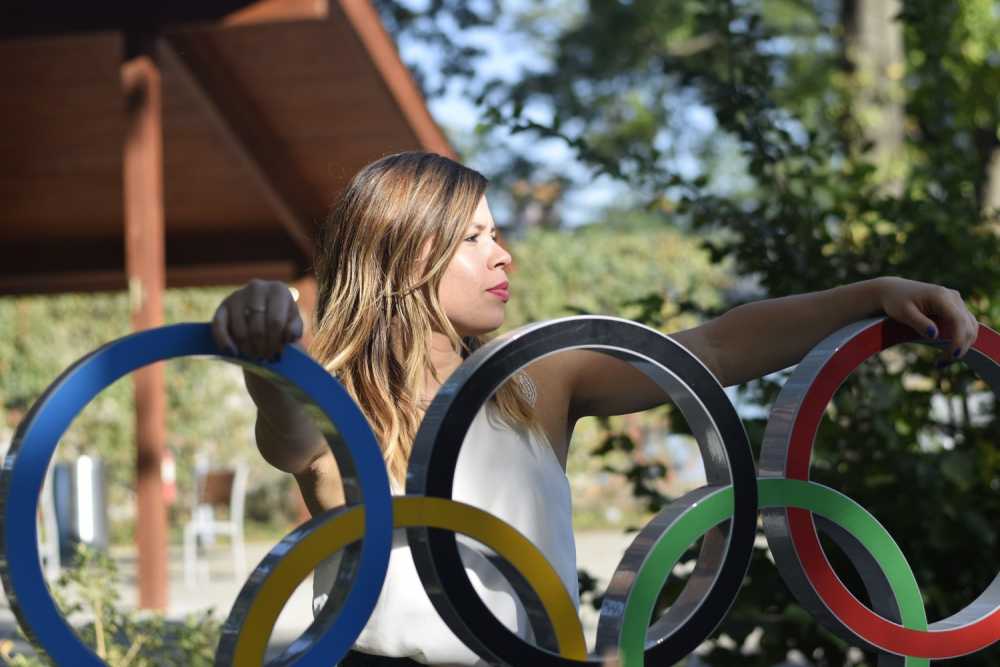
Sustainability is about making small changes in our lifestyle because we need the earth as much as the earth needs us. As Olympic sabre fencing medalist Ibtihaj Mohammed said, “If there is no planet, there are no sports.” I never saw it that way but it’s true. If we do not have snow, most winter sports will be gone. If global warming continues, summer sports will suffer: athletes will have to hydrate more and take more breaks and supporters won’t have a pleasant time watching live events at stadiums.
The Youth Climate Action Summit helped me understand what it means to take action on climate. Now I am more conscious of the food I consume, the clothes I buy, the plastic I use and I am trying to educate others around me about the actions they can take.
As a team, we should take care of the environment the same way we take care of our bodies. Working together, we can achieve sustainable development worldwide!
Banner image courtesy of Evan Bradley. Remaining photos courtesy of the Connect4Climate #YouthTakeover team.
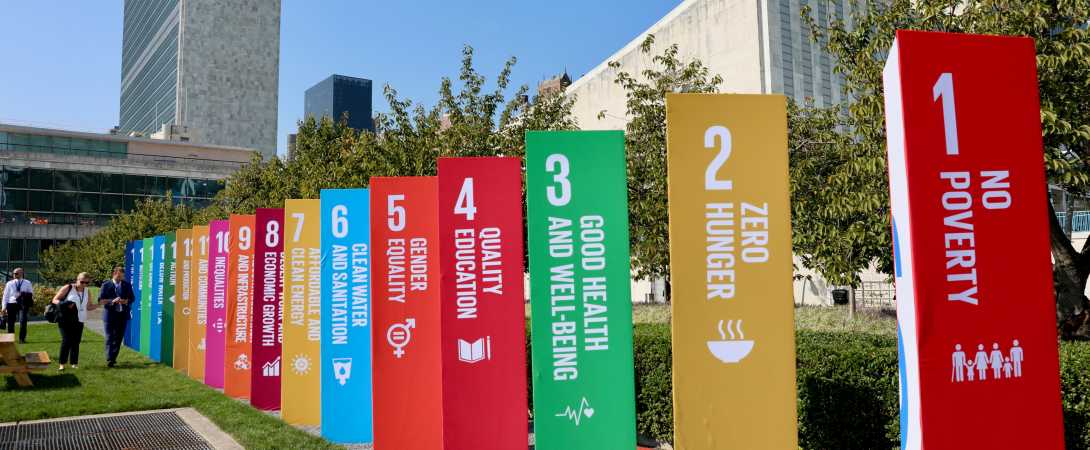
As scientists, effective communication is one of the most difficult challenges we face when discussing climate change, global warming, and other complex issues. This is particularly pressing when communicating to those who lack a scientific background or who are unfamiliar with the relevant terminology and scientific methods. During Connect4Climate’s #YouthTakeover at the United Nations (UN) Climate Summit, attendees deconstructed these barriers to tackling the critical issue of climate change. Participants from diverse scientific and non-scientific backgrounds, age groups, and geographic locations discussed their perceptions of climate change and the need for action in a way that everyone could understand.
These environmentally conscious changemakers included artists, government officials, filmmakers, fashion industry models, researchers, media specialists, high school and college students, business owners, musicians, journalists, and more. Each group of activists shared their unique perspectives in a digestible format on social media while also preserving the rigor of climate science. These groups of people, who are not typically proficient in quantitative science themselves, molded the principle of climate change into a universal language, and subsequently mobilized their followers into action toward climate change solutions. As a result, people everywhere could remotely access and understand topics such as fast fashion, climate finance, and pollution.
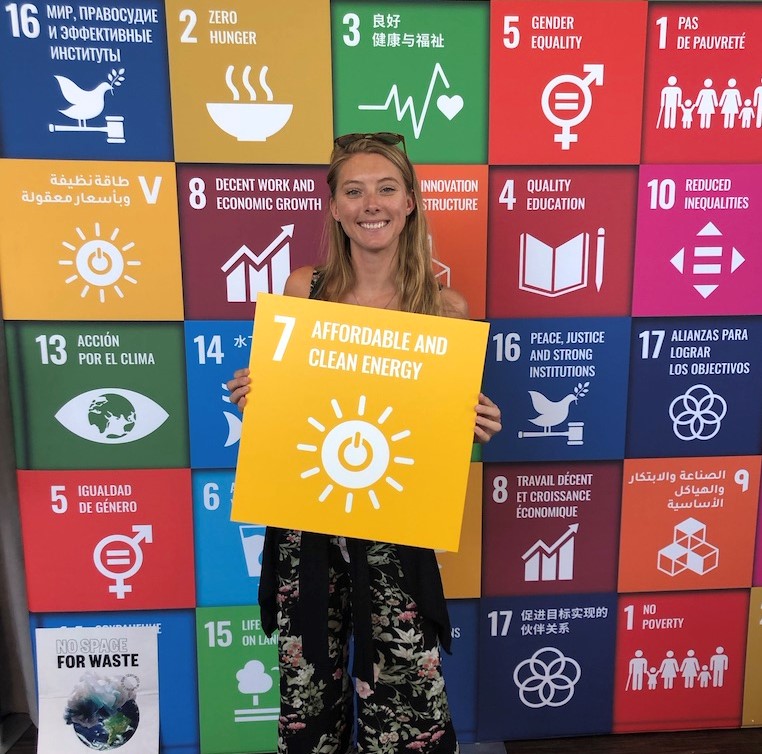
These climate activists publicized key facts about human-induced impacts on the environment that pertain to their followers’ fields of interests, expressed the urgency to act on climate change, and articulated how to transition to more environmentally conscious practices to abate these human-caused damages. Models from the fashion industry informed their social media followers about science in a way that captured the attention of like-minded individuals. For example, the models explained that many clothing designers do not consider the environment during the manufacturing process, and that the amount of energy and water required to produce those clothes results in adverse unintended consequences for the natural environment. Changemakers of all backgrounds contributed to and echoed this sentiment: musicians performed songs about caring for the environment; artists created masterpieces on the dangers we are currently facing and predicted to face; and CEOs of well-known businesses explained how carbon pricing can positively impact their industries and increase competitiveness. Moreover, youth encouraged other youth to engage in the growing climate movement.
The most effective component of the weekend event was the collaboration among all of these people, as global citizens, to work towards solving the problems of climate change and to push for concerted action towards achieving the 17 UN Sustainable Development Goals. When people from a variety of backgrounds join together to work on a specific issue, stronger, more diverse and more achievable solutions emerge than when everyone stays confined to their own discipline. This could be observed at the Youth Policy Jam on Unlocking Climate Finance, where attendees of the Youth Climate Summit were divided into groups of ten to discuss how to procure more funding for youth programs combating climate change. Participants ranging from high school students to established World Bank and government officials provided their input, collaborating to produce a wealth of ideas that the young organizers of the Policy Jam, Youth Climate Lab, presented later that week during the UN General Assembly.

Another segment of the UN event featured Pollution Pods, an installation created by the artist Michael Pinsky and other urban planners, researchers, and activists. The pods simulated air quality from five different cities around the world: London, New Delhi, Beijing, São Paulo, and Oslo. These simulations included temporal changes in the concentrations of various pollutants from fossil-fuel-burning emissions, namely carbon dioxide, sulfur dioxide, ozone, nitrous oxide, and particulate matter. In some regions, such as New Delhi and Beijing, the pods were very hot, smelly, and hazy. Experiencing the air quality conditions in other cities worldwide was truly eye-opening. It is one thing to learn about pollution in school and universities but another to experience first-hand how these pollutants impact the natural environment and our own bodies. The collaborative effort behind the creation of these pods was remarkable, which made me hopeful that people who come from non-science backgrounds can grasp the weight of human-induced impacts on the environment and that the science community can communicate complex processes in simple and understandable terms to a general audience.
Connecting and working with people from non-technical backgrounds on the issue of global climate change is of utmost importance in our time. Although effective science communication is challenging, and some of its barriers persist, it gave me immense hope to see that creativity and partnerships can get the word out to many individuals who otherwise might disengage from science discussions because of the daunting jargon and nuances. Connect4Climate’s #YouthTakeover proved that effective dialogue is possible and that the steps we have already taken toward breaking down these communication barriers will catalyze climate action for our generation and those yet to come.
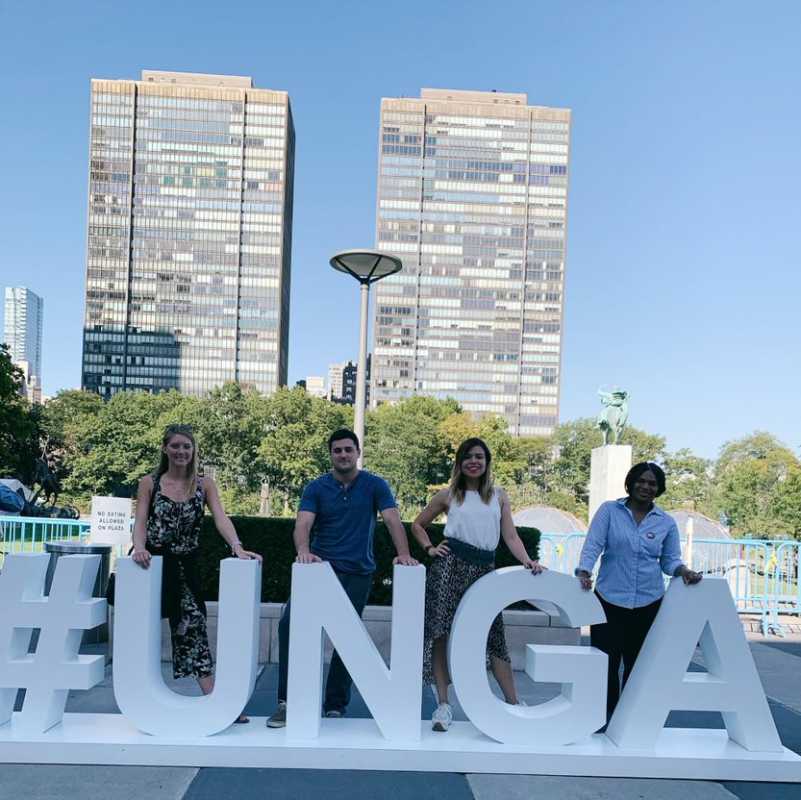
Banner image courtesy of Kaia Rose, Connect4Climate. Other images courtesy of the Connect4Climate #YouthTakeover team.

Next week, the members of the UN General Assembly will gather in New York City for a Climate Action Summit specially convened by UN Secretary-General António Guterres in light of the severity of the climate crisis as well as the urgent need to implement the commitments of the Paris Agreement and raise global ambition on climate action.
Given the instrumental role youth leaders have played in bringing the crisis to the fore of international discussion, it’s only fitting that the weekend leading into the event will feature a dedicated Youth Summit where pioneering activists like Greta Thunberg will have the chance to talk sustainable strategy with up-and-coming entrepreneurs, student innovators, and policymakers, laying the groundwork for new commitments to be announced at the Climate Summit.
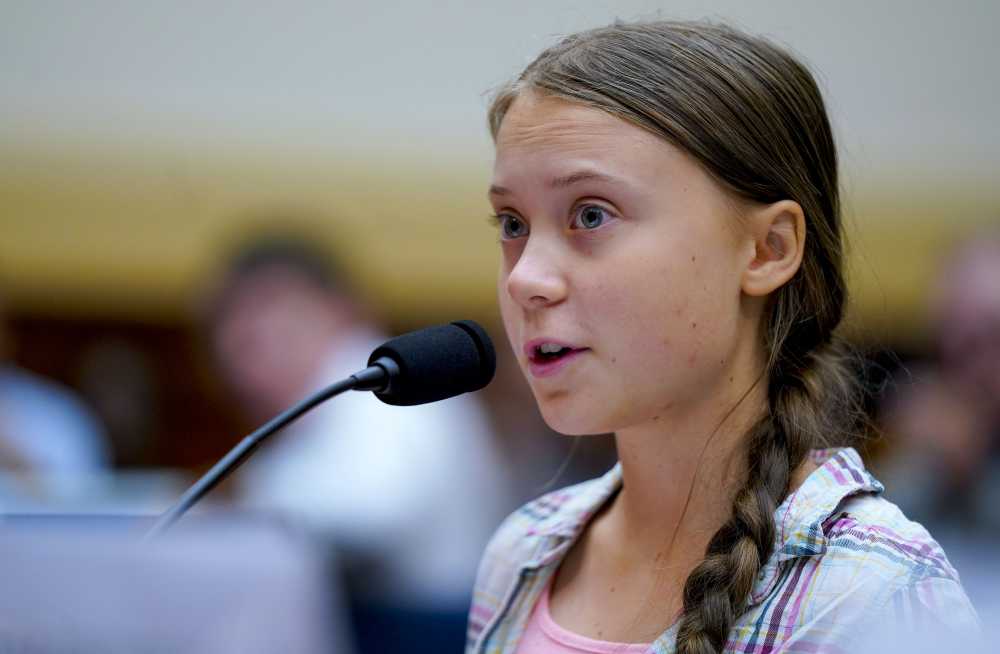
Taking place on Saturday, September 21, this Youth Summit will involve youth climate leaders from almost every country in the world in an “action-oriented, intergenerational, and inclusive” event. The sessions scheduled for the Summit are well-aligned with C4C’s own advocacy priorities, addressing such topics as circularity in fashion (Fashion4Climate) and climate communication in sports (Sport4Climate). The Summit will also highlight young entrepreneurs with a pitch competition, examine “the anatomy of influence” on- and offline, feature a musical performance by Nigerian pop star Waje, and much more.
C4C is providing special support to the Youth Policy Jam happening in the afternoon, which will bring youth leaders together with experts in finance and policy for a dynamic discussion on how to unlock climate finance at a scale commensurate with the climate crisis. The Policy Jam is designed to develop creative collaborative solutions on how to generate more ambitious and youth-friendly climate finance—solutions which will subsequently be presented as tangible outcomes during the General Assembly.
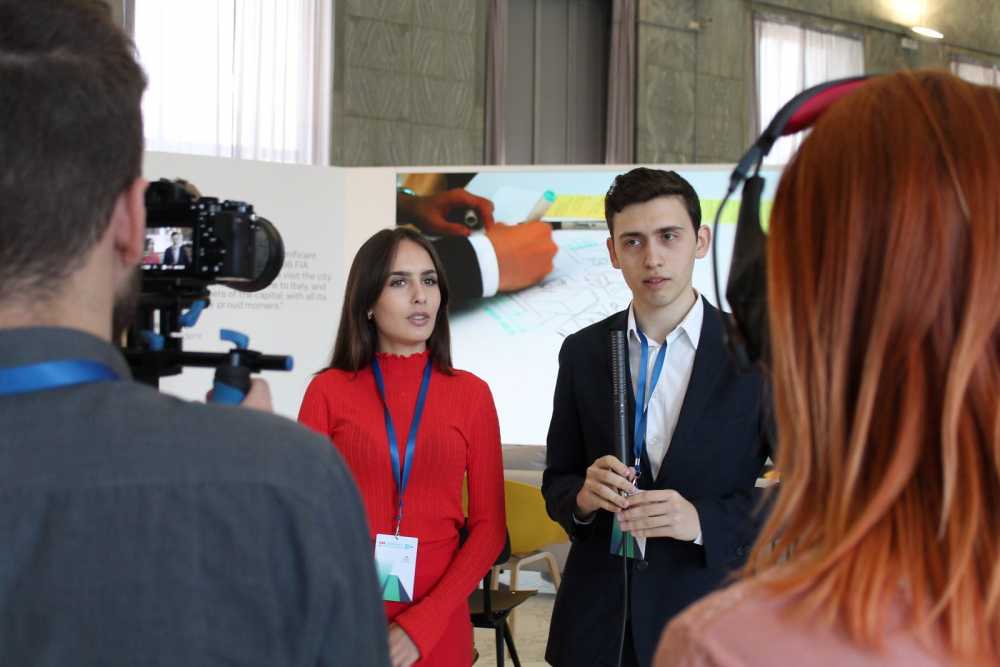
With the spotlight on youth action, Connect4Climate saw an ideal opportunity to launch a new #YouthTakeover, inviting local students passionate about climate communications to take the helm on C4C’s social media coverage of the Youth Summit and other exciting climate action events happening around New York City during the weekend of September 21-22. Follow their journeys on Twitter and Instagram with the hashtag #YouthTakeover.
The #YouthTakeover initiative has come a long way over the course of the past year, building momentum at climate events in Europe before making big splashes at the 2019 Innovate4Climate conference in Singapore and, most recently, Asia-Pacific Climate Week in Bangkok, Thailand. C4C looks forward to debuting the #YouthTakeover concept in North America and to giving young people the chance to tell the stories of their own climate heroes on the historic occasion of the UN’s Youth Climate Summit.
Hosted by the World Bank Group and supported by Italy’s Ministry of the Environment and Energy Security and Germany’s Federal Ministry for Economic Cooperation and Development, Connect4Climate (C4C) is a global partnership for a livable planet that connects, creates, and communicates to build long-lasting change for future generations.